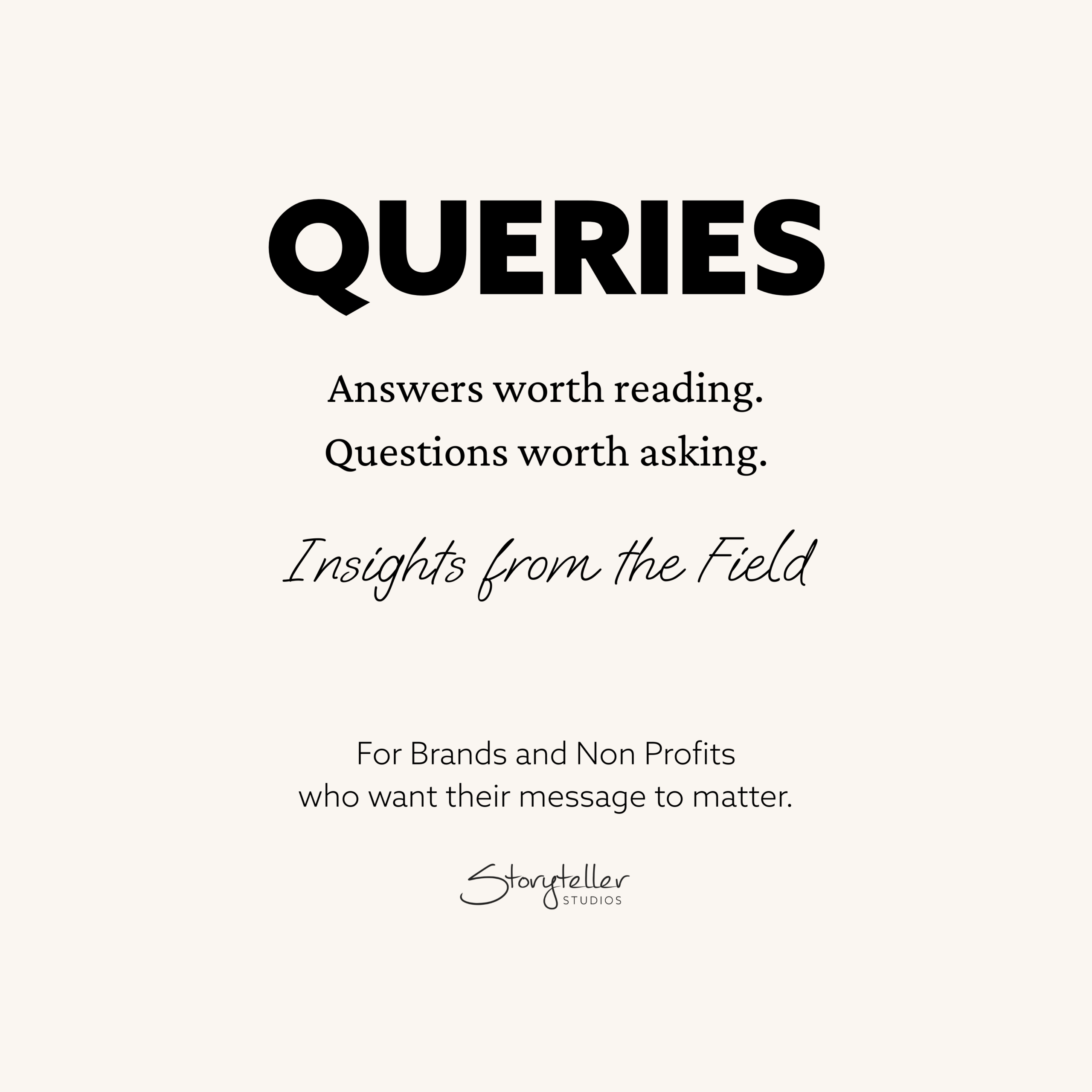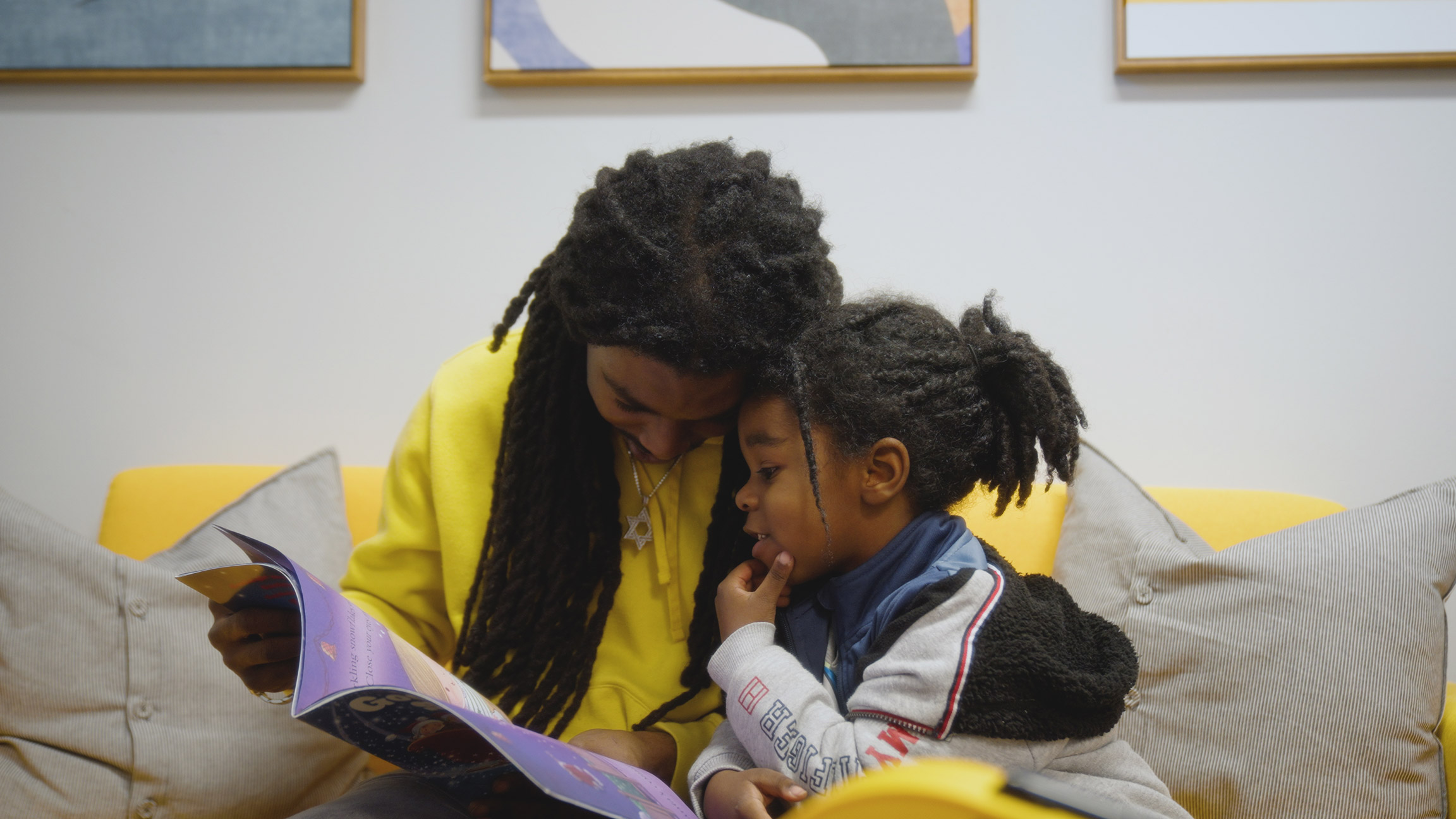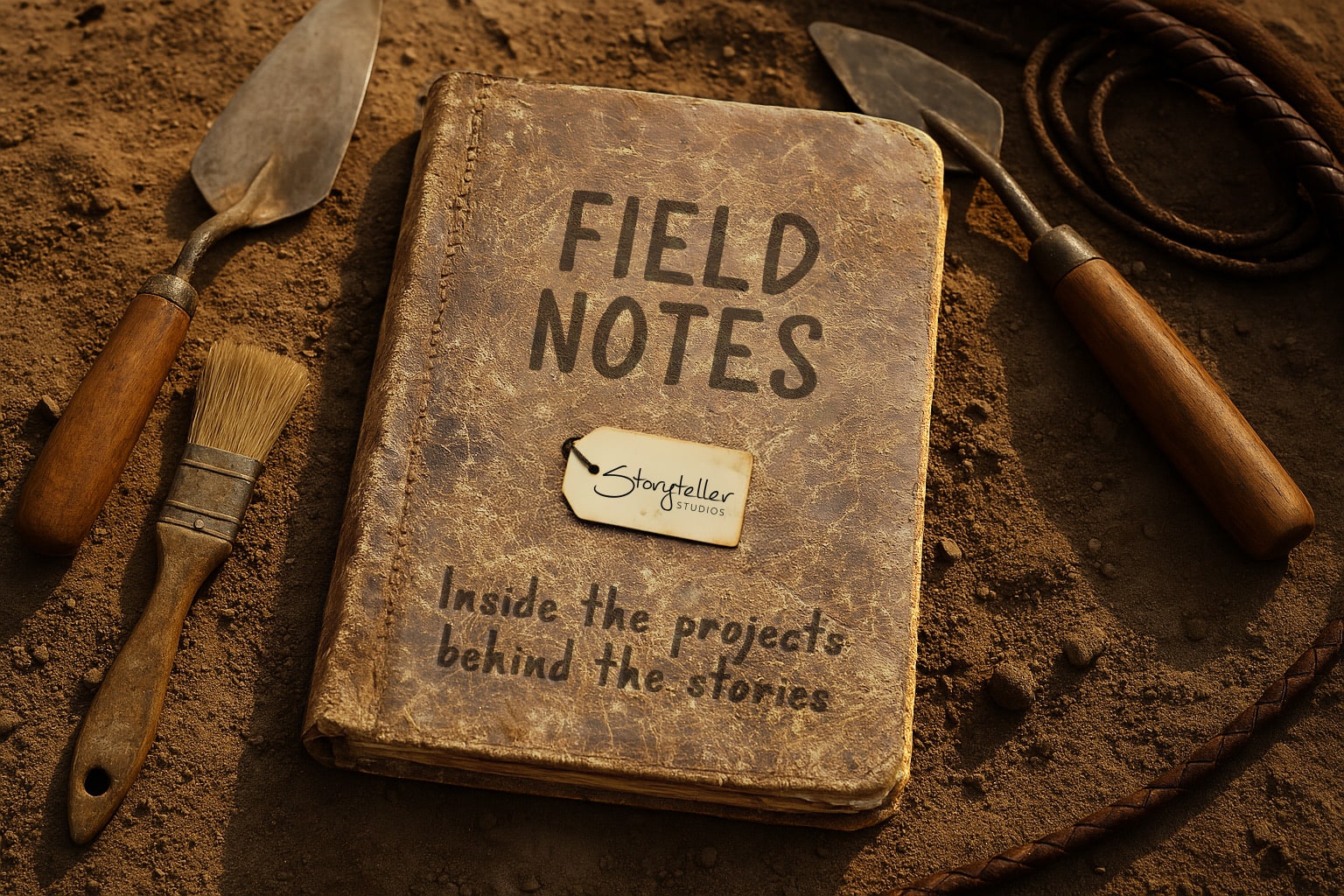What Is Video Storytelling? Our Approach to Connecting Brands with Audiences
Video storytelling isn’t a trend. It’s a technique for persuasive messaging.
It’s how humans are wired.
From the first moments of human existence, we’ve told stories to make sense of the world. To find belonging. To carry truth from one person to another. Not through data or features or talking points, but through something deeper. Shared experience.
Storytelling connects us, not just to a brand, but to each other.
If your work has purpose, then the way you communicate that purpose matters.
That’s where video storytelling comes in.
What is video storytelling, really?
It’s the use of cinematic, emotional narrative to say something that matters, and make people feel it.
Not just “watch it.” Not just “hear it.” Feel it.
True video storytelling is different from content marketing. It isn’t a list of features. It isn’t filled with jargon. It doesn’t chase trends or algorithms. It’s slower. More honest. And more powerful because of it.
We tell stories that start with truth, then shape that truth using visuals, voice, pacing, structure, and tone.
What you get is more than a video. You get a message that resonates.
Why story works when information doesn’t
Marketing that just informs is easy to ignore. Marketing that connects. That’s what gets remembered.
That’s because the human brain doesn’t store facts the same way it stores feelings. We forget numbers. We forget taglines. But we remember how something made us feel. That’s what story does.
And when it’s done well, video storytelling:
Builds trust
People trust what feels real. A well-told story built around truth can create more credibility than any talking point.
Creates clarity
It simplifies. It focuses. It helps your audience make sense of what you do, and how it helps them.
Moves people to act
Video storytelling isn’t just emotional. It’s strategic. We don’t just want people to feel something. We want them to do something.
Our philosophy: the customer is the hero
This is where most brand videos go wrong.
They focus on the company. The product. The origin story. The “we.”
We flip that.
In our work, you’re the guide. Your customer is the hero.
That’s the role shift that makes the story land. When the audience sees themselves in the story, they lean in. They listen. They believe.
This is baked into our process and every interview we conduct.
We ask:
- Who are you trying to reach?
- What do you want them to feel?
- What should they do next?
Then we build a story that makes all of that possible, without ever making the video about you.
Our process for story-first video
We don’t start with a script. We start with a goal. Then we build backwards from the outcome you want to the message that will get you there.
Here’s what that looks like:
1. Strategy
We begin with a discovery conversation and then share our Project Guidebook, a collaborative tool that helps clarify the purpose, audience, tone, and story structure.
2. Story Development
We help identify the most compelling narrative elements: who should speak, what scenes or settings will support the message, and what emotional arc we’re building.
3. Filming
We guide every interview, shape every shot, and create space for real moments. Our crew is professional, empathetic, and highly skilled at filming non-actors.
4. Editing
We sift through hours of footage to find the emotional truth, then shape that into a story that feels both personal and strategic. We deliver versions for events, social, and web.
5. Delivery & Launch Support
We don’t just hand you a file. We help you think through how and where to use it. Our videos often serve multiple purposes over several years.
Real examples of video storytelling in action
SIU Medicine
We built the “Champions” campaign using unscripted interviews with real patients. No script. No teleprompter. Just truth. The result? A clearer brand voice and more trust in the market.
Maddog Strong Foundation
This nonprofit needed to share a story of tragic loss and generosity. We helped tell Maddie’s story with dignity and emotion, resulting in donor growth and national exposure.
Refuge Ranch
Their video centered on three young people’s experience, and brought the mission to life in a way a brochure never could. That story now lives at the center of their communications.
FAQs About Video Storytelling
Is storytelling right for corporate brands?
Yes. It’s not about being dramatic. It’s about being human. Every brand has a mission. Every mission has a reason. And that reason is where the story begins.
What if I don’t have a dramatic story?
You don’t need one. You need a clear one. Good storytelling isn’t about shock value, it’s about meaning. Sometimes the simplest story is the strongest.
Can I get multiple versions of the same story?
Yes. We often deliver a core video (2–4 minutes), along with 15–60 second social cuts, vertical versions, and even interview clips for extended use.
How long should a storytelling video be?
It depends on the use case. For web or events: 2–4 minutes is typical. For social: 15–60 seconds. The key is to say one thing clearly, and stop when you’ve said it.
Your story is worth telling. Let’s make it matter.
We don’t just make video. We help mission-driven brands say something real.
If you’re ready to lead with purpose, and you’re looking for the right way to show it, let’s talk about the story only you can tell.
we're storyteller studios
documentary-style film for brands & causes
In 2013, we started leveraging the power of documentary-style film for brands and causes in our hometown of Springfield, Illinois (hence our affinity for Lincoln).
Since then, we’ve worked with clients nationally and traveled to cities including Chicago, St. Louis, Kansas City, Indianapolis, Louisville, and Des Moines.
No matter where you are, we’d be honored to serve your brand next.
featured post
3 Must-Have Ingredients for Marketing Videos That Work
Every effective marketing video relies on three essential ingredients that make it resonate with audiences and drive results—discover what they are and how they can make your next video project a success.




